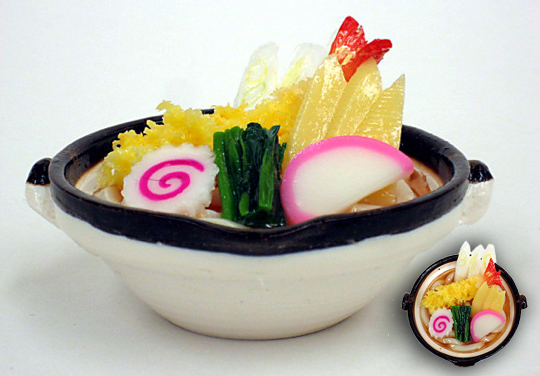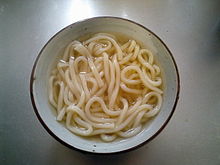July 11, 2011
Japanese Names And Meanings
Whether you are looking for that perfect Japanese name for your new baby or you are simply interested in Japanese names and meanings in English, our goal at japanese-names.org is to have the most complete online list of both Japanese girl names and boy names. Included in the list is the name, meaning, and most common kanji (Japanese characters) used:
- AIKA meaning "love song" (愛佳) - Japanese girl name.
- AIKO meaning "child of love" (愛子) - Japanese girl name.
- AIMI meaning "love beautiful" (愛美) - Japanese girl name.
- AINA meaning "love vegetables" (愛菜) - Japanese girl name.
- AIRI meaning "love jasmine" (愛莉) - Japanese girl name.
- AKANE meaning "brilliant red" (茜) - Japanese girl name.
- AKEMI meaning "bright beautiful" (明美) - Japanese girl name.
- AKI meaning "bright / autumn" (明 / 秋) - Japanese unisex name.
- AKIHIRO meaning "great brightness" (明宏) - Japanese boy name.
- AKIKO meaning "bright child" (明子) - Japanese girl name.
- AKIO meaning "bright man" (昭夫) - Japanese boy name.
- AKIRA meaning "bright / clear" (明 / 亮) - Japanese unisex name.
- AMATERASU meaning "shining heaven" (天照) - Japanese girl name.
- AMI meaning "asia beautiful" (亜美) - Japanese girl name.
- AOI meaning "blue" (碧) - Japanese unisex name.
- ARATA meaning "new, fresh" (新) - Japanese boy name.
- ASAMI meaning "morning beauty" (麻美) - Japanese girl name.
- ASUKA meaning "tomorrow perfume, fragrance" (明日香) - Japanese girl name.
- ATSUKO meaning "kind child" (篤子) - Japanese girl name.
- ATSUSHI meaning "industrious director" (敦司) - Japanese boy name.
- AYA meaning "color" (彩) - Japanese girl name.
- AYAKA meaning "colorful flower" (彩花) - Japanese girl name.
- AYAKO meaning "colorful child" (彩子) - Japanese girl name.
- AYAME meaning "iris" (菖蒲) - Japanese girl name.
- AYANE meaning "colorful sound" (彩音) - Japanese girl name.
- AYANO meaning "my color" (彩乃) - Japanese girl name.
- AYUMU meaning "walk dream, vision" (歩夢) - Japanese boy name.
- CHIE meaning "wisdom, intellect" (恵) - Japanese girl name.
- CHIEKO meaning "child of intelligence, wisdom" (恵子) - Japanese girl name.
- CHIHARU meaning "one thousand springs (as in season)" (千春) Japanese girl name.
- CHIKA meaning "scatter flowers" (散花) - Japanese girl name.
- CHIKAKO meaning "child of a thousand perfumes" (千香子) - Japanese girl name.
- CHINATSU meaning "one thousand summers" (千夏) - Japanese girl name.
- CHIYO meaning "one thousand generations" (千代) - Japanese girl name.
- CHIYOKO meaning "child of a thousand generations" (千代子) - Japanese girl.
+81-50-5539-9816
10 weird facts about JAPAN
1. Japan is full of little Butt Pirates: Watch your butt, because little kids love sticking their finger up it. It’s called Kancho, and it’s not pleasant, especially if you don’t know what’s going on.
2. Japan is the only place with four distinct seasons: This comes from the fabulous files of the Nihonjinron. People don’t really believe most of the stuff here anymore (like Japanese evolved from a separate superior monkey, Japanese brains are different thus only Japanese can truly learn Japanese, etc), but I’ve found that the season one is the most prevalent of the bunch.
3. There are #$#$%ing Gigantic Hornets: These hornets are not to be messed with. They’re huge, deadly, and wipe the floor with weak European bees. I fear.
4. Monkeys like hot baths: There are lots of hot springs in Japan, and in the last fifty years monkeys figured out they could stay warm in them. I really want to go to there.
5. Japanese novels remind me of LSD: Enough said?
6. Japanese Commercials: I love ‘em – Just do a search on YouTube for “Japanese Commercials” and you’ll wonder where the last six hours went.
7. Everything seems to have Mayonnaise on it: Pizza, sushi, mayo on mayo with extra mayo… You name it. There are even all-mayonnaise restaurants in existence.
8. People Bathe at night: Maybe you don’t think this one is weird – this is how I got to grow up, and it was wonderful in college because I got the dorm showers all to myself. How do you sleep at night being dirty, anyways?
9. Christmas is ridiculous…ly awesome: What? You don’t get a Christmas cake, celebrate Santa’s birthday, and get your Christmas KFC chicken? You’re missing out.
10. Everything is available via vending machines: Drinks, hot drinks, hot food, t-shirts, used underwear, alcohol, cigarettes, toys, porn, and who knows what else. In fact, I don’t want to know.
2. Japan is the only place with four distinct seasons: This comes from the fabulous files of the Nihonjinron. People don’t really believe most of the stuff here anymore (like Japanese evolved from a separate superior monkey, Japanese brains are different thus only Japanese can truly learn Japanese, etc), but I’ve found that the season one is the most prevalent of the bunch.
3. There are #$#$%ing Gigantic Hornets: These hornets are not to be messed with. They’re huge, deadly, and wipe the floor with weak European bees. I fear.
4. Monkeys like hot baths: There are lots of hot springs in Japan, and in the last fifty years monkeys figured out they could stay warm in them. I really want to go to there.
5. Japanese novels remind me of LSD: Enough said?
6. Japanese Commercials: I love ‘em – Just do a search on YouTube for “Japanese Commercials” and you’ll wonder where the last six hours went.
7. Everything seems to have Mayonnaise on it: Pizza, sushi, mayo on mayo with extra mayo… You name it. There are even all-mayonnaise restaurants in existence.
8. People Bathe at night: Maybe you don’t think this one is weird – this is how I got to grow up, and it was wonderful in college because I got the dorm showers all to myself. How do you sleep at night being dirty, anyways?
9. Christmas is ridiculous…ly awesome: What? You don’t get a Christmas cake, celebrate Santa’s birthday, and get your Christmas KFC chicken? You’re missing out.
10. Everything is available via vending machines: Drinks, hot drinks, hot food, t-shirts, used underwear, alcohol, cigarettes, toys, porn, and who knows what else. In fact, I don’t want to know.
Prosper Co.,Ltd
Japanese used car dealer
For assistance
contact
HIRO
+81-5055-32-8180
Udon

Udon (饂飩?, usually written as うどん) is a type of thick wheat-flour noodle popular in Japanese cuisine.
Udon is usually served hot as noodle soup in a mildly flavoured broth, in its simplest form as kake udon, served in kakejiru made of dashi, soy sauce(shōyu), and mirin. It is usually topped with thinly chopped scallions. Other common toppings include tempura, often prawn or kakiage (a type of mixed tempura fritter), or abura age, a type of deep-fried tofu pockets seasoned with sugar, mirin, and soy sauce. A thin slice of kamaboko, a halfmoon-shaped fish cake, is often added. Shichimi can be added to taste.
The flavor of broth and topping vary from region to region. Usually, dark brown broth, made from dark soy sauce (koikuchi shōyu) is used in easternJapan, and light brown broth, made from light soy sauce (usukuchi shōyu) is used in western Japan. This is even noticeable in packaged instant noodles, which are often sold in two different versions for east and west.

Origin
In China, similar thick wheat flour noodles are called cū miàn (粗麵). This original udon was 2 to 3 cm in diameter, a flat pancake-shaped "noodle" added to miso-based soup. The Japanese character 饂飩 is easily confused with and different from the modern Chinese characters 餛飩, which refers to wonton dumplings, not noodles. In Chinese, udon is called 烏冬 wūdōng or 烏冬麵 wūdōngmiàn, sometimes 烏龍麵 wūlóngmiàn. (Note that this is unrelated to Oolong tea, 烏龍茶 wūlóngchá.)
The origin of udon in Japan is credited to Buddhist priests who traveled to China: local areas specifically attribute Kūkai or Enni. Kūkai, a Buddhistpriest, traveled to China around the beginning of the 9th century to study Buddhism. Sanuki Province claimed to have been the first to adopt udon from Kūkai. Enni, a Rinzai Zen monk, went to China in the 13th century; Hakata claimed to have produced udon based on Enni's recipe.
Like many Japanese noodles, udon noodles are served chilled in the summer and hot in the winter. Toppings are chosen to reflect the seasons and to balance with other ingredients. Most toppings are added without much cooking, although some are deep-fried. Many of these dishes may also be prepared with soba.Hot
- Kake udon (in Kantō) or Su udon (in Kansai): Hot udon in broth topped with thinly sliced green onions, and perhaps a slice of kamaboko.

- Kitsune udon: "Fox udon". Topped with Aburaage (sweetened deep-fried tofu pockets). A favorite in the Kansai region, particularly Osaka.
- Tempura udon : Topped with tempura, especially prawn, or kakiage, a type of mixed tempura fritter.
- Tanuki udon ("Raccoon-dog udon") (in Kantō) or Haikara udon (in Kansai): Topped with tenkasu (deep-fried tempura batter).
- Tsukimi udon: "Moon-viewing udon". Topped with raw egg, which poaches in the hot soup.
- Wakame udon: Topped with wakame, a dark green sea vegetable.
- Karē udon: "Curry udon". Udon in a soup made of Japanese curry. May also include meat or vegetables.
- Chikara udon: "Power udon". Topped with toasted mochi rice cakes. A hearty dish.
- Stamina (sutamina) udon: "Stamina udon". Udon with various hearty ingredients, usually including meat, a raw egg, and vegetables.
- Nabeyaki udon: A sort of udon hot-pot, with seafood and vegetables cooked in a nabe, or metal pot. The most common ingredients are tempura shrimp with mushrooms and an egg cracked on top.
- Kamaage udon: Served in a communal hot-pot with hot water, and accompanied by a hot dipping sauce of dashi and soy sauce.
- Udon-suki: Udon cooked in the manner of sukiyaki.
- Yaki udon: Stir-fried udon in soy-based sauce, prepared in a similar manner to yakisoba. This originated in Kitakyushu of Fukuoka Prefecture. (Note that whileyakiudon is made with udon, yakisoba is not made from buckwheat soba, but with steamed Chinese-style ramen.)

- Misonikomi udon: Hard udon noodles simmered in red miso soup. The soup generally contains chicken, a floating cracked raw egg that is stirred in by the eater, kamaboko, vegetables and tubers. The noodles are extremely firm in order to stand up to the prolonged simmering in the soup; additionally, the noodles do not contain salt, so as to avoid over-salting from the salt in the miso.
- Houtou udon: a local dish of Yamanashi Prefecture, a type of miso soup with udon and plenty of vegetables.
- Ninja udon: a local dish of Iga-Ueno in the Mie Prefecture. Udon in soup, with a selection of meats (usually beef, tempura and aburaage) "hidden" in the noodles, like ninja.
Cold
- Zaru udon: Chilled udon noodles topped with shredded nori and served on a zaru (笊 or ざる), a sieve-like bamboo tray. Accompanied by a chilled dipping sauce, usually a strong mixture of dashi, mirin, and shoyu. Eaten with wasabi or grated ginger.
- Bukkake udon: Cold udon served with various toppings liberally sprinkled on top. It may include:
- kijoyu udon: served in a cold soup of raw (unpasteurized) soy sauce and sudachi (a type of citrus) juice, sometimes with a bit of grated daikon
Regional varieties
There are wide variations in both thickness and shape for udon noodles.

- Biei-style Curry (カレー): udon from Biei, Hokkaido.
- Inaniwa (稲庭): a thin type from Akita Prefecture.
- Ise (伊勢): udon from Mie Prefecture.
- Kansai (関西): udon is a soft type of medium thickness from the Kansai region.
- Kishimen (棊子麺, or more commonly きし麺): is a flat type from the Nagoya area.
- Sanuki (讃岐): udon is a thick and rather stiff type from Kagawa Prefecture.
- Hōtō (rarely 餺飥, commonly ほうとう): a flat and wide type, usually cooked with vegetables, particularly Japanese "kabocha" squash, from Yamanashi Prefecture.
- Dangojiru (団子汁): similar to the above Hohtoh, from Ōita Prefecture. Nominally a "dumpling soup", it resembles very thick, flat udon.
- Okinawa soba (沖縄そば): also called suba, a regional Okinawan noodle made by adding some vegetal ash to the flour, similar to how ramen is made. However, it is very similar to udon.
- Udon is also popular in South Korea, where it is called udong (우동) [udoŋ].
- There is also a dish called udon in Palau, because of the former Japanese administration. The broth is soy sauce–based like Japanese udon. However, as there were many immigrants from Okinawa, it uses less broth like Okinawa soba. Most notably, the noodle is that of spaghetti, as it is easier to acquire there.
Check this Famous Food In Japan
here in
and contact
AI TAMAKI
ai@prosperjp.com / +81-50-5539-9816
Manmade Beach in Japan
Seagaia, Miyazaki, Japan
Seagaia, Miyazaki, Japan
Ocean Dome is known as the world's largest indoor water park (300m-100m-38m),
with a retractable roof. The air temperature is always kept around 30°C
and the water temperature is kept at around 28°C.
The name Seagaia is a combination of the words “sea” and “gaia”,
which is Greek for “earth”. It's located near the Pacific Ocean on Kyushu Island.

The Seagaia Ocean Dome was the world's largest indoor waterpark, located in Miyazaki, Miyazaki, Japan. The Ocean Dome, which was a part of the Sheraton Seagaia Resort, measured 300 metres in length and 100 metres in width, and was listed on the Guinness World Records. It opened in 1993, and visitor numbers peaked in 1995 at 1.25 million a year. Entrance cost was ¥2600 per adult and ¥1600 for children (roughly 30 and 20 USD in 1995 respectively)Japanese_yen, depending on the season. The Ocean Dome was officially closed on October 1, 2007 as part of a renovation and partial re-branding of the resort. The roof of the structure was retractable in four sections.
The Ocean Dome sported a fake flame-spitting volcano, artificial sand and the world's largest retractable roof, which provided a permanently blue sky even on a rainy day.

This is just one of the many interesting places you need to visit during summer in Japan

Looking for a Good Looking Car
just visit us
and call
TOSHI
toshi@prosperjp.com / +81-50-5539-9816
FEATURED CARS
Looking for good conditioned Used cars???? Visit our site now www.prosperjp.com and find excellent good conditioned cars. Prosper Co., Ltd. exporter of Used Cars. Prosper Co., Ltd is a registered car exporter based in Tokyo, Japan. Being a leading vehicle exporter and a pioneer parallel importer in Japan! We provide convenient, quick and professional services to worldwide customers.
For ASSISTANCE look For YURI MOTO
+81-50-5539-9816
Subscribe to:
Comments (Atom)




















